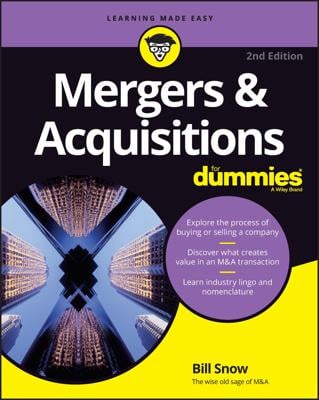Mergers and acquisitions take place for many strategic business reasons, but the most common reasons for any business combination are economic at their core. Following are some of the various economic reasons:
Increasing capabilities: Increased capabilities may come from expanded research and development opportunities or more robust manufacturing operations (or any range of core competencies a company wants to increase). Similarly, companies may want to combine to leverage costly manufacturing operations (as was the hoped for case in the acquisition of Volvo by Ford).
Capability may not just be a particular department; the capability may come from acquiring a unique technology platform rather than trying to build it.
Biopharmaceutical companies are a hotbed for M&A activities due to the extreme investment necessary for successful R&D in the market. In 2011 alone, the four biggest mergers or acquisitions in the biopharmaceutical industry were valued at over US$75 billion.
Gaining a competitive advantage or larger market share: Companies may decide to merge into order to gain a better distribution or marketing network. A company may want to expand into different markets where a similar company is already operating rather than start from ground zero, and so the company may just merge with the other company.
This distribution or marketing network gives both companies a wider customer base practically overnight.
One such acquisition was Japan-based Takeda Pharmaceutical Company’s purchase of Nycomed, a Switzerland-based pharmaceutical company, in order to speed market growth in Europe. (That deal was valued at about US$13.6 billion, if you’re counting.)
Diversifying products or services: Another reason for merging companies is to complement a current product or service. Two firms may be able to combine their products or services to gain a competitive edge over others in the marketplace. For example, in 2008, HP bought EDS to strengthen the services side of their technology offerings (this deal was valued at about US$13.9 billion).
Although combining products and services or distribution networks is a great way to strategically increase revenue, this type of merger or acquisition is highly scrutinized by federal regulatory agencies such as the Federal Trade Commission to make sure a monopoly is not created. A monopoly is when a company controls an overwhelming share of the supply of a service or product in any one industry.
Replacing leadership: In a private company, the company may need to merge or be acquired if the current owners can’t identify someone within the company to succeed them. The owners may also wish to cash out to invest their money in something else, such as retirement!
Cutting costs: When two companies have similar products or services, combining can create a large opportunity to reduce costs. When companies merge, frequently they have an opportunity to combine locations or reduce operating costs by integrating and streamlining support functions.
This economic strategy has to do with economies of scale: When the total cost of production of services or products is lowered as the volume increases, the company therefore maximizes total profits.
Surviving: It’s never easy for a company to willingly give up its identity to another company, but sometimes it is the only option in order for the company to survive. A number of companies used mergers and acquisitions to grow and survive during the global financial crisis from 2008 to 2012.
During the financial crisis, many banks merged in order to deleverage failing balance sheets that otherwise may have put them out of business.
Mergers and acquisitions occur for other reasons, too, but these are some of the most common. Frequently, companies have multiple reasons for combining.
Even though management and financial stakeholders view mergers and acquisitions as a primarily financial endeavor, employees may see things a little differently (they’re thinking WIIFM, or what’s in it for me?).
Combining companies has some potential downsides for employees, who have to deal with immediate fears about employment or business lines, but more positive sides of merging may include more opportunities for advancement, or having access to more resources to do one’s job.

